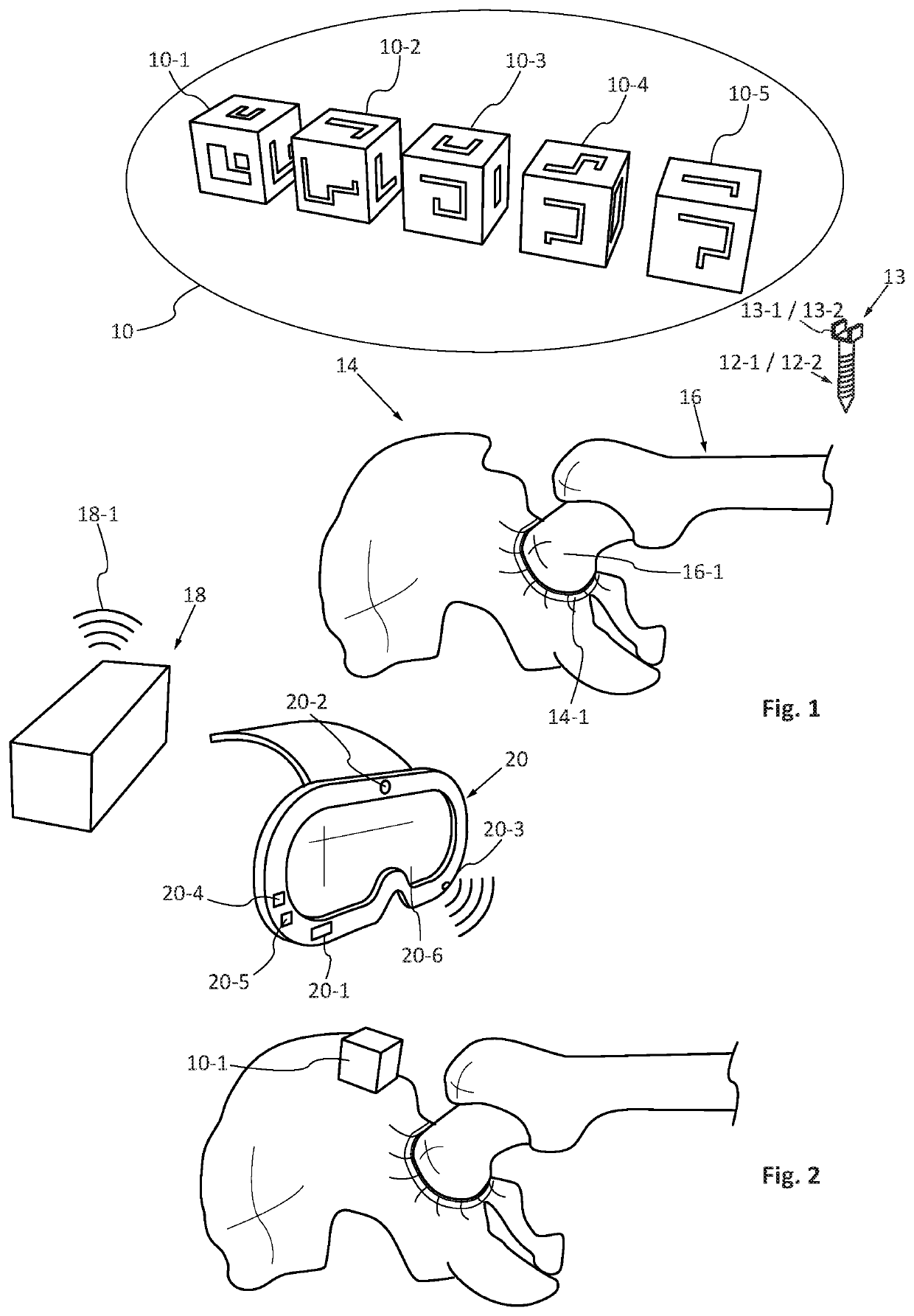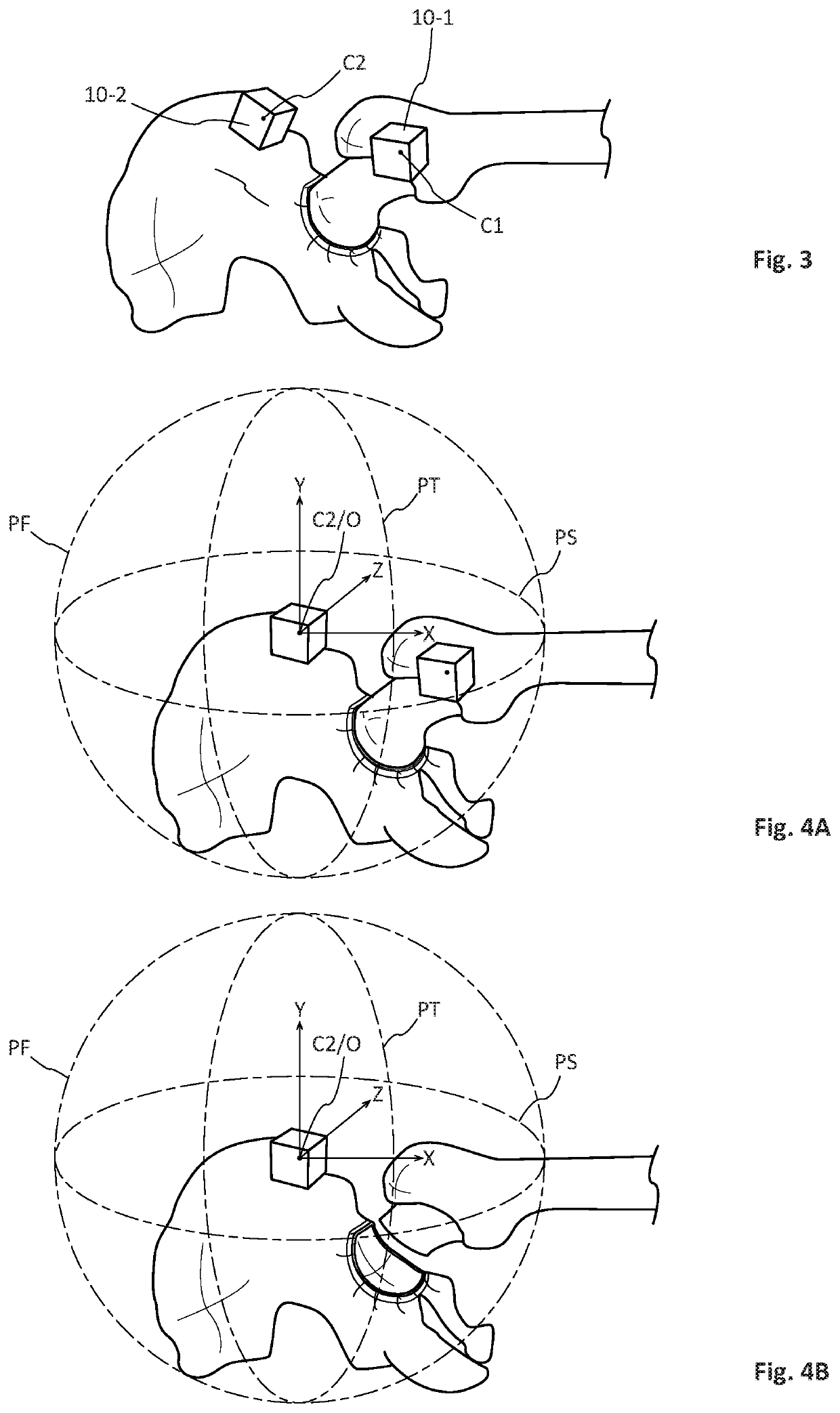Method and device for assisting a surgeon fit a prosthesis, in particular a hip prosthesis, following different surgical protocols
a technology for hip prosthesis and surgical protocol, applied in the field of hip prosthesis, can solve the problems of reduced limb length, largely left intervention, and even more complex
- Summary
- Abstract
- Description
- Claims
- Application Information
AI Technical Summary
Benefits of technology
Problems solved by technology
Method used
Image
Examples
Embodiment Construction
[0049]FIG. 1 shows the device according to this invention comprising markers 10, in the case in point, a Total Hip Prosthesis intervention, THP, 10-1 to 10-5.
[0050]The markers are as follows:
[0051]10-1: reference marker associated with the femur,
[0052]10-2: reference marker associated with the pelvis,
[0053]10-3: marker associated with the femoral head,
[0054]10-4: marker associated with the acetabulum, and
[0055]10-5: verification marker associated with the trial femoral prosthesis.
[0056]In the embodiment chosen, these markers are 3D QR codes, which is to say cubes with each of the faces of each cube being identified by a code and spatially detectable.
[0057]These markers 10 are suitable for surgery and can be sterilized and affixed by any means.
[0058]Other types of markers could be used provided they can be detected in 3D.
[0059]FIG. 1 shows means 12 for attaching these QR code markers to the bony part, for example using a surgical screw 12-1 and 12-2 respectively for the markers 10-1 ...
PUM
 Login to View More
Login to View More Abstract
Description
Claims
Application Information
 Login to View More
Login to View More - R&D
- Intellectual Property
- Life Sciences
- Materials
- Tech Scout
- Unparalleled Data Quality
- Higher Quality Content
- 60% Fewer Hallucinations
Browse by: Latest US Patents, China's latest patents, Technical Efficacy Thesaurus, Application Domain, Technology Topic, Popular Technical Reports.
© 2025 PatSnap. All rights reserved.Legal|Privacy policy|Modern Slavery Act Transparency Statement|Sitemap|About US| Contact US: help@patsnap.com



